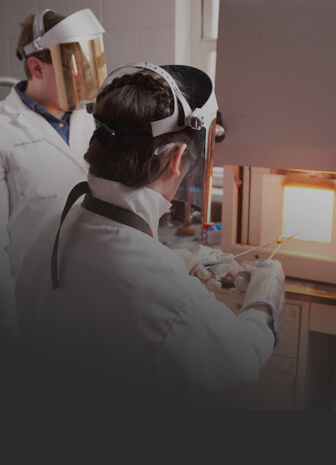The Bridgeman method, also known as the crucible descent method, was proposed by Bridgeman in 1925. Stockbarger later developed this method on the basis of the original one, so it is also called the B-S method (Bridgeman-Stockbarge method).
The Bridgeman method is a commonly used crystal growth method. It is divided into the vertical Bridgman method (VB) and the horizontal Bridgman method (HB)
Also known as the crucible descent method, is a method of growing crystals from the melt. Usually the crucible descends in the crystallization furnace. When passing through the area with a large temperature gradient, the melt in the crucible crystallizes from bottom to top into a whole crystal. This process can also be completed by the crystallization furnace rising along the crucible.

Compared with the Czochralski method, this method can use a fully closed or semi-closed crucible, and the composition is easy to control; because the crystals grown by this method remain in the crucible, it is suitable for growing large crystals, and several crystals can also be grown in one furnace at the same time. In addition, since the process conditions are easy to master, it is easy to program and automate. The structure of a typical crystal growth furnace.
The specific experimental process is as follows.
The material required for crystal growth is placed in a cylindrical crucible, slowly descended, and passed through a heating furnace with a certain temperature gradient to control the furnace temperature slightly higher than the melting point of the material. According to the properties of the material and the heating device, a resistance furnace or a high-frequency furnace can be selected. When passing through the heating area, the material in the crucible is melted. When the crucible continues to descend, the temperature at the bottom of the crucible first drops below the melting point and begins to crystallize. The crystal continues to grow as the crucible descends. This method is often used to prepare single crystals of alkali metals, alkaline earth metal halides and fluorides.
| Name | Parameter |
| Model | DM-CGF4050 |
| Total Power | ≤65Kw |
| Power Supply | 3 Phase/380V50Hz |
| Heating Power | ≤36Kw |
| Max Temperature | 1000℃ (Can Be Customized) |
| Rated Working Temperature | 0-900℃ (Can Be Customized) |
| Working Area Size | Φ400*500mm(Dia*H)/ Can Be Customized |
| Furnace Inner Size | Φ800*1400mm |
| Working Vacuum | 7*10-3Pa |
| Temperature Measurement System | Platinum-rhodium thermocouple /S type |
| Temperature Control Accuracy | ±1℃ |
| Temperature Controller | Eurotherm(UK) |
| Number of Temperature Zone | 3 Zones |
| Temperature Uniformity | ±3℃/Adopt European table for precise zone temperature control and five-point temperature measurement (five-point temperature measurement needs to be stable above 600 degrees and kept warm for 1 hour before measurement, and the measurement area is the horizontal and vertical area of the constant temperature working area) |
| Heating Area Size | Ф550×650mm(Dia*H)/Can Be Customized |
| Descending Speed | Slow Lifting 0.1-10mm/h (Servo Control)
Fast Lifting 50-200mm/min (Servo Lifting) |
| Effective Stroke of Center Axis | ≤600mm |
| Displacement Accuracy | 0.001mm |
| Slow Speed Accuracy | 0.01mm/h |
| Load Capacity of Center Axis | 200kg |
| Max Pressure In Furnace | ≤0.03MPa |
Can Be Customized